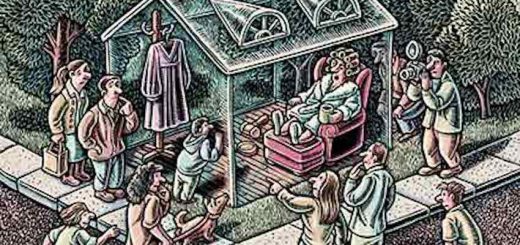Live from the SCC: Misdirection of the Jury on Post-Offence Conduct in R v Rodgerson
On January 14, 2015, the Supreme Court of Canada (“SCC”) heard oral arguments for the case Her Majesty the Queen v Jason Rodgerson [Rodgerson] regarding: firstly, whether or not the majority of the Ontario Court of Appeal (“ONCA”) in R v Rodgerson, 2014 ONCA 366 [Rodgerson, ONCA] erred in law by finding reversible error in the jury charge because the trial judge failed to explain to the jury the mandatory reasoning process through which it could consider the relevant post-offence conduct in assessing the issue of intent for murder; and secondly, whether or not the ONCA erred in law by failing to apply the curative proviso outlined in s. 686(1)(b)(iii) of the Criminal Code, RSC 1985, c C-46.
Judicial History
The respondent (Jason Rodgerson) was convicted by a jury of second degree murder for the death of Amber Young. With respect to the post-offence conduct, after killing Ms. Young, Mr. Rogerson buried her body outside in a shallow grave behind his garage, cleaned up the room where the murder had occurred, attempted to flee the scene when the police arrived at his home, and provided the police with false statements. (For a more detailed set of facts, please see paragraphs 1-20 of Rodgerson, ONCA.)
At trial, Mr. Rodgerson argued that the forensic evidence supported his version of the events, which was that a short altercation occurred in the bedroom, during which he was attacked and stabbed by Ms. Young. Mr. Rodgerson further argued that in an attempt to defend himself, he inadvertently smothered the victim by placing his arm across her nose and mouth.
A majority of the ONCA allowed Mr. Rodgerson’s appeal from conviction and ordered a new trial. According to Doherty J, the trial judge had committed two errors: first, he misdirected the jury to consider Mr. Rodgerson’s flight and lies to the police on the issue of intent for murder; and second, while Mr. Rodgerson’s efforts to bury the body and clean up the scene were potentially probative of Mr. Rodgerson’s state of mind at the time of the killing, the trial judge failed to adequately instruct the jury on how that evidence could be used.
Instructions to Jurors on the Use of Post-Offence Conduct
The primary issue on this appeal was whether or not Doherty J erred in finding that the trial judge misdirected the jury on the use it could make of Mr. Rodgerson’s post-offence conduct (see Rodgerson, ONCA, para 78). Counsel for Her Majesty the Queen (Megan Stephens) argued that the trial judge’s instructions to the jury, concerning how the jury could use evidence of Mr. Rodgerson’s clean-up of the scene and attempt to hide the body when assessing how state of mind for murder, were entirely appropriate.
Taking an opposing view, counsel for Mr. Rodgerson (Christopher D Hicks) argued that Doherty J was correct in concluding that the trial judge had erred by failing to relate the relevant evidence of post-offence conduct to the issue of intent by explaining to the jury how the post-offence conduct was capable of being probative on that issue.
Purpose of the Use of Post-Offence Conduct
One of the first hurdles for Ms. Stephens came about in her explanation of the purpose of the use of post-offence conduct. Although appellate courts have endorsed the use of post-offence conduct in a variety of circumstances, particularly to assess levels of culpability or intent, Moldaver J took significant issue with the use of such conduct in this case. Moldaver J stated:
I find the use of post-offence conduct to be a very nuanced and a kind of esoteric distinction in terms of how it can be used to show intent, and how it cannot be used to show intent. The use of post-offence conduct is not something where you can just rely on the good common sense. We (being the various judges that have presided over the case) are relying on our legal knowledge, not just our good common sense, yet we are all arguing amongst one another as to how post-offence conduct should or should not be put to the jury.
In my view, Moldaver J perfectly illustrated the difficulties associated with the practice of putting an accused’s post-offence conduct to a jury. Since it is clear that common sense is not enough, proper instructions must come from the trial judge on how such post-offence conduct can be interpreted and used. In the present case, all post-offence conduct was put to the jury, while only specific post-offence conduct, namely the hiding of the body and the clean up, could be used to infer intent. As such, Moldaver J concluded that more information needed to be given to the jury.
Closing Statements of Counsel at Trial
Another vital moment of the hearing occurred when Rothstein J asked Ms. Stephens: Was the trial judge’s charge to the jury enough, or did the jury need more on the specific facts of the case? Ms. Stephens responded by arguing that the SCC has previously stated that addresses of counsel can be used to fill gaps in a trial judge’s charge. As such, the closing submissions of both counsels were sufficient in filling the gap, and therefore, more was not needed by the trial judge.
In my view, it appeared that the answer that Rothstein J was looking for, Ms. Stephens was not willing to admit. As such, Rothstein J quickly stated: So more was needed, but it was filled by the closing statements of counsel. Cromwell J then concluded the discussion by declaring that there had in fact been a legal error on the part of the trial judge for not providing a complete and thorough charge to the jury.
This issue posed a considerable problem for Ms. Stephen as she was required to concede that the trial judge’s instructions had in fact been inadequate, while at the same time attempting to argue that gaps in the instructions had been filled.
No Dispute by Defence Counsel
During the submissions of Mr. Hicks on the use of post-offence conduct, Moldaver J, asked almost immediately “where was defence counsel when all of this was going on?” Moldaver J further stated,
[T]he Crown takes the position that defence counsel put its stamp of approval on the judge’s instructions to the jury after long discussion about post-offence conduct. The defence counsel said “Yup. That’s okay. That’s fine. We got the limiting instruction to look at the explanation.” Nut now, here we are, some years later, defence counsel is saying “Oh this was awful judge. You should have done it a different way.”
Mr. Hicks, in an attempt to respond to Moldaver J’s comment, contended that defence counsel had cautioned the trial judge that the evidentiary basis for the instruction on the flight and lies had not been established. Immediately after Mr. Hicks’ response, Moldaver J stated that while he accepted Mr. Hicks’ explanation as true,
having the judge say “no” to that, it seems to me that the next thing that defence counsel would want to have done is to say, “Okay judge. If you are going to let the lies and flight in on that basis, then you have to make it crystal clear to this jury how the evidence can be used or not used.” Was any of that said to the trial judge?
Mr. Hicks responded by stating that defence counsel had indirectly made those statements to the trial judge. Although Moldaver J did not question Mr. Hicks on this issue any further, it is unclear as to whether or not Moldaver J was satisfied by Mr. Hicks’ response.
The Applicability of the Curative Proviso
Another important issue that was raised during the hearing was the issue of the applicability of the curative proviso. The curative proviso, as outlined in s. 686(1)(b)(iii) of the Criminal Code, permits an appellate court to uphold a jury’s verdict notwithstanding a trial judge’s error of law, provided it is satisfied that no substantial wrong or miscarriage of justice has occurred.
Ms. Stephens put forward the argument that in the present case, the judge’s error was harmless since the jury would have undoubtedly been focused on those aspects of the post-offence conduct that were more closely related to the actual events of the offence, namely Mr. Rodgerson’s attempt to hide the body and clean up the scene, rather than on Mr. Rodgerson’s lies to the police and attempt to flee.
On the other hand, Mr. Hicks argued that the errors of the trial judge in respect of his instructions on the post-offence conduct were not so minor or harmless that they would not have had any impact on the verdict.
The pinnacle moment of the discussion on the curative proviso came when Abella J put to Ms. Stephens the following question:
What is it about common sense that would stop a jury from saying clearly it is second degree murder instead of manslaughter?
Ms. Stephens responded by stating that the court should compare the evidence of the flight and lies to the evidence that goes to intent, namely, the extensive efforts to conceal any trace of the victim, extent of the violence, hiding of the body and cleaning up the room. Alone, Mr. Rodgerson’s lies, and attempt to flee and avoid detection did not speak to the difference between second degree murder or manslaughter. However, the evidence that someone had gone to extreme lengths and taken great risks to conceal what they have done, was evidence from which a jury could infer that the person knew that they had caused significant injuries to the person that were not consistent with a non-intentional death.
However, Abella J then asked:
But how does the post-offence conduct go to showing intent? Would a jury, being an ordinary person, be able to see protection or evasion as evidence of intent? From the post-offence conduct that had been outlined at trial, how does common sense help the jury in deicing what the intent was without some explanation as to how the conduct can be used?
In my view, this set of questions is of vital importance, since it begs the question whether or not a jury is even capable of making such an inference and whether or not that inference would be correct. For me, Abella J got to the root issue of jury trials: the potential inability of such ordinary persons to correctly see the post-offence conduct of Mr. Rodgerson as evidence of intent. While this issue proved to be of significant concern during the hearing, it is also the reason for why jury trials are allowed and are used in order to ensure a fair trial.








Join the conversation